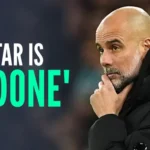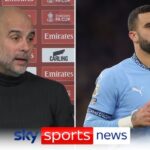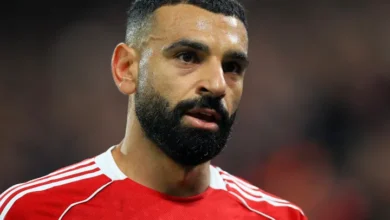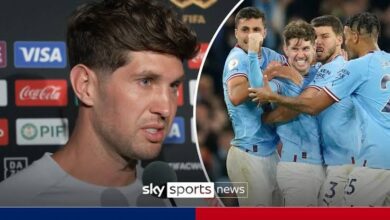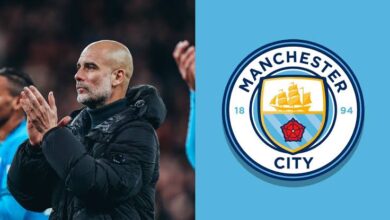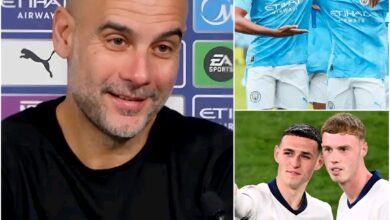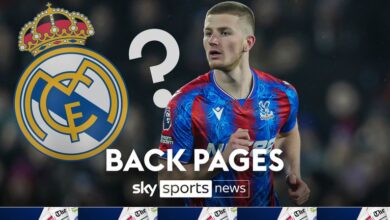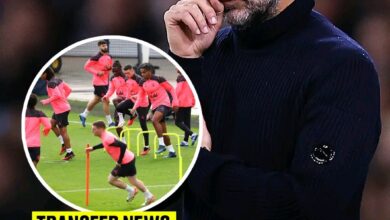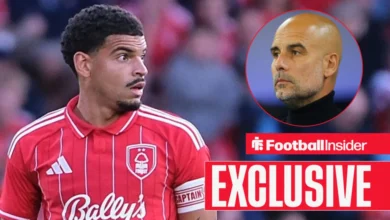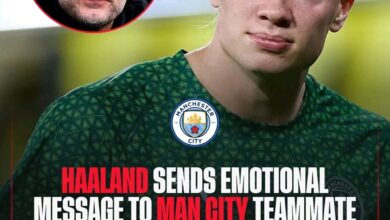Man City winger to leave after just three years as big sell-on clause agreed with Bayer Leverkusen
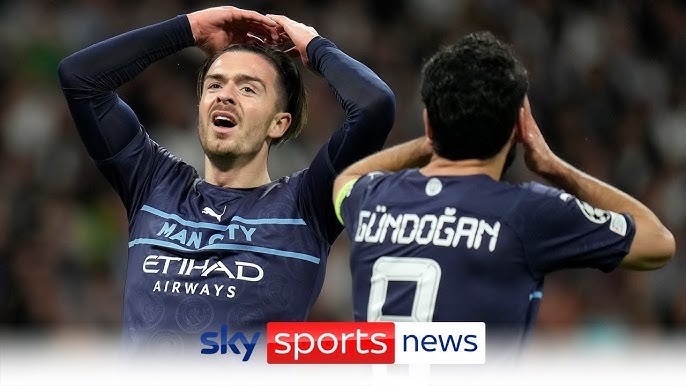
Manchester City’s summer transfer window has been characterized by a deliberate strategy of squad reduction rather than expansion. Pep Guardiola’s clear directive to work with a smaller, more manageable group of players has set the tone for what promises to be a busy period of outgoings at the Etihad Stadium. With the successful departure of Kyle Walker already completed, the club’s attention has turned to resolving the futures of several other high-profile players while simultaneously nurturing their academy prospects through strategic sales and loan arrangements.
The current transfer window represents a pivotal moment for City as they attempt to balance their immediate competitive needs with long-term financial sustainability. The club’s approach reflects a mature understanding of squad management at the highest level, where quality often trumps quantity, and where every player must contribute meaningfully to the team’s objectives.
Farid Alfa-Ruprecht: A Promising Departure to Bayer Leverkusen
The Player’s Journey
Farid Alfa-Ruprecht’s impending move to Bayer Leverkusen represents both an opportunity and a calculated risk for Manchester City. The 19-year-old German winger joined City’s academy in 2022 from Hamburger SV, bringing with him the technical proficiency and tactical awareness that German football is renowned for developing. Despite his undoubted talent, Alfa-Ruprecht never managed to break into Guardiola’s first team, highlighting the intense competition for places at one of Europe’s elite clubs.
His journey at City has been marked by consistent progress through the youth ranks. The highlight of his time at the club came during the 2024-25 season when he made the bench for City’s Carabao Cup clash against Tottenham, a recognition of his outstanding performances at U21 level. Throughout that campaign, Alfa-Ruprecht demonstrated his attacking prowess with 10 goals and four assists across 19 appearances, statistics that caught the attention of several European clubs.
The Transfer Details
Bayer Leverkusen’s interest in Alfa-Ruprecht materialized into a concrete offer worth £5 million, a fee that reflects both the player’s potential and the current market conditions for promising academy graduates. The German club, known for their excellent track record in developing young talent, represents an ideal destination for the winger to continue his development.
The most intriguing aspect of this transfer is the 40% sell-on clause that Manchester City have negotiated into the deal. This substantial percentage demonstrates the club’s belief in Alfa-Ruprecht’s long-term potential and their commitment to maintaining a financial interest in his future success. Should the player fulfill his promise and develop into a star player in the Bundesliga, City could potentially receive a significant windfall from any future transfer.
Challenges Ahead at Leverkusen
However, Alfa-Ruprecht’s path to regular first-team football at Leverkusen may not be straightforward. The German club’s reported interest in PSV Eindhoven’s Johan Bakayoko presents a potential obstacle to the young City academy graduate. Bakayoko, at 22 years old, represents a more experienced option in the right-wing position and would likely be favored for immediate first-team opportunities.
This situation highlights the complex dynamics of modern football transfers, where clubs must balance immediate needs with long-term development projects. For Alfa-Ruprecht, the challenge will be to prove his worth quickly and establish himself as a viable alternative to more established players in Leverkusen’s squad.
The Morgan Gibbs-White Saga: A Different Strategic Approach
The Pursuit and Withdrawal
The Morgan Gibbs-White transfer saga represents one of the most intriguing storylines of City’s summer window. The 25-year-old midfielder’s impressive performances for Nottingham Forest, combined with his public interaction with Pep Guardiola following City’s FA Cup semi-final victory over Forest, seemed to signal an inevitable move to the Etihad Stadium.
Guardiola’s post-match conversation with Gibbs-White, conducted in full view of the cameras, sparked widespread speculation about the player’s future. For many observers, it appeared to be a public courtship that would inevitably lead to a formal transfer approach. However, City’s ultimate decision to withdraw from the pursuit reveals the complex calculations that drive modern transfer decisions.
Financial Considerations and Strategy
Fabrizio Romano’s insights into City’s thinking provide valuable context for understanding their approach to the transfer market. Initially, Nottingham Forest’s valuation of approximately £100 million for Gibbs-White was deemed excessive by City’s hierarchy. Even when this figure was subsequently reduced to £70 million, the club remained unconvinced about the value proposition.
The decision to pursue a “different strategy” reflects City’s sophisticated approach to squad building. Rather than investing heavily in a single player, the club chose to address multiple positions with the same financial resources. This approach led to the acquisitions of Tijjani Reijnders and Rayan Cherki, two players whose combined skill sets arguably provide greater tactical flexibility than Gibbs-White alone.
Comparative Analysis: Gibbs-White vs. Reijnders
The statistical comparison between Gibbs-White and Reijnders offers insight into City’s decision-making process. During the 2024-25 season, Gibbs-White contributed 7 goals and 10 assists across 38 appearances, totaling 3,142 minutes of playing time. In contrast, Reijnders, playing in a more demanding schedule, registered 15 goals and 5 assists across 57 games, accumulating 4,861 minutes on the pitch.
While Gibbs-White’s assist tally suggests a player comfortable in creative situations, Reijnders’ superior goal output indicates a more complete attacking contribution. The Dutch midfielder’s ability to contribute across multiple midfield positions also provides Guardiola with greater tactical options, aligning with the manager’s preference for versatile players who can adapt to different roles within his system.
James McAtee: The Academy Graduate’s Crossroads
Current Situation and Interest
James McAtee’s future at Manchester City has become one of the most closely watched storylines of the summer transfer window. The 22-year-old midfielder, who has progressed through City’s academy system, finds himself at a crucial juncture in his career. Despite his obvious talent and potential, the intense competition for places in Guardiola’s midfield has limited his opportunities for regular first-team football.
Nottingham Forest’s interest in McAtee has intensified following their expected windfall from Morgan Gibbs-White’s £60 million move to Tottenham. The need to replace Gibbs-White’s creativity and goal threat has led Forest to identify McAtee as an ideal candidate to fill the void left by the departing midfielder.
The Valuation Dilemma
The Telegraph’s reports suggest that Forest are preparing a formal offer of approximately £25 million for McAtee’s services. However, this figure falls significantly short of City’s valuation, which is closer to the £42.5 million fee that Chelsea paid for Cole Palmer in 2023. This discrepancy highlights the challenge facing City in extracting maximum value from their academy products.
The Palmer precedent is particularly relevant, as it demonstrates the potential value of academy graduates who are given the opportunity to flourish elsewhere. Palmer’s subsequent success at Chelsea has vindicated his decision to leave City, while also highlighting the club’s ability to command substantial fees for promising young players.
International Interest and Options
The interest from Borussia Dortmund and Eintracht Frankfurt adds an international dimension to McAtee’s potential departure. Both German clubs have established reputations for developing young talent and providing pathways to first-team football that may not be available at City. The opportunity to play in the Bundesliga and potentially compete in the Champions League represents an attractive proposition for a player seeking to establish himself at the highest level.
Serie A clubs Fiorentina and Roma have also been linked with McAtee, though their interest appears less advanced than that of their German counterparts. The Italian clubs’ involvement demonstrates the widespread recognition of McAtee’s talent and the competitive nature of the transfer market for promising young players.
Strategic Implications and Future Planning
Squad Management Philosophy
Guardiola’s desire to work with a smaller squad reflects a broader philosophy about team management and player development. The Spanish manager has consistently emphasized the importance of having players who are fully committed to the team’s objectives and capable of contributing meaningfully when called upon. This approach requires difficult decisions about talented players who may not fit into the immediate plans.
The departure of players like Alfa-Ruprecht and potentially McAtee represents a calculated risk for City. While these players may develop into significant talents elsewhere, their current contributions to the first team are limited. The challenge lies in balancing the immediate needs of the squad with the long-term potential of these young players.
Financial Sustainability and FFP Compliance
The emphasis on sales and the inclusion of substantial sell-on clauses in transfer agreements reflects City’s awareness of Financial Fair Play regulations and the need to maintain sustainable financial practices. The potential income from future sales of former academy players could provide valuable resources for future transfer activities.
The 40% sell-on clause in Alfa-Ruprecht’s deal exemplifies this approach, providing City with a significant stake in the player’s future success while generating immediate income from his departure. This model allows the club to maintain financial flexibility while supporting the development of young talent.
The Broader Context of City’s Transfer Strategy
Competition and Market Dynamics
The competitive nature of the modern transfer market is evident in the multiple clubs pursuing City’s players. The interest from various European leagues demonstrates the international recognition of the quality within City’s academy system. However, it also highlights the challenges facing the club in retaining and developing young talent in an increasingly competitive environment.
The success of former City players like Cole Palmer at Chelsea serves as both a validation of the academy’s quality and a reminder of the opportunities that exist elsewhere. This dynamic creates pressure on City to either provide clear pathways to first-team football or risk losing talented players to competitors.
Long-term Academy Development
The sales of academy graduates must be viewed within the context of City’s broader investment in youth development. The club’s state-of-the-art training facilities and comprehensive development programs continue to produce talented players who attract interest from across Europe. The challenge lies in converting this talent into either first-team contributors or valuable transfer assets.
The success of players like Phil Foden in breaking through to the first team provides a template for others to follow. However, the limited number of positions available in Guardiola’s system means that only a select few academy graduates will achieve this level of success.
Conclusion
Manchester City’s approach to the current transfer window reflects a mature understanding of modern football’s complexities. The club’s willingness to part with talented young players while securing favorable financial terms demonstrates a strategic approach to squad management that balances immediate competitive needs with long-term sustainability.
The departures of players like Farid Alfa-Ruprecht and the potential sale of James McAtee represent calculated decisions based on careful analysis of squad requirements and market conditions. While these moves may be disappointing for fans hoping to see academy graduates break through to the first team, they reflect the realities of competing at the highest level of European football.
The inclusion of substantial sell-on clauses in transfer agreements shows City’s confidence in their ability to identify and develop talent, while also providing financial protection for future investment. This approach allows the club to maintain its competitive edge while supporting the development of young players who may find greater opportunities elsewhere.
As the transfer window progresses, City’s strategy will likely continue to focus on streamlining the squad while maintaining the quality and depth necessary to compete across multiple competitions. The success of this approach will ultimately be measured not just in immediate results, but in the long-term sustainability and competitiveness of the club.
The stories of Alfa-Ruprecht, McAtee, and the Gibbs-White pursuit illustrate the complex dynamics of modern football transfers, where sporting, financial, and strategic considerations must be carefully balanced to achieve optimal outcomes. For Manchester City, navigating these challenges successfully will be crucial to maintaining their position at the summit of English and European football.

